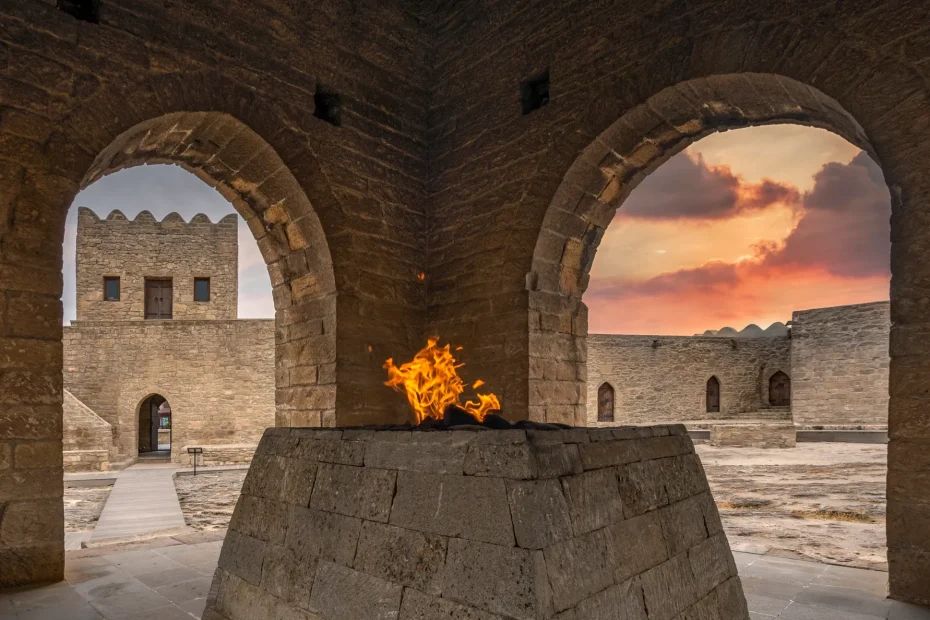Ateshgah Fire Temple: The Sacred Symbol of the Land of Fire
Azerbaijan, often called the “Land of Fire,” is a country steeped in mysticism, natural wonders, and ancient traditions. One of the most profound symbols of this fiery heritage is the Ateshgah Fire Temple, located on the Absheron Peninsula just outside Baku. This ancient site, where flames have burned for centuries, is both a historical marvel and a sacred place that tells the story of fire worship, spiritual devotion, and cultural convergence.
What Is the Ateshgah Fire Temple?
The Ateshgah, meaning “Home of Fire” in Persian, is a pentagonal complex with a central altar that once contained a naturally burning eternal flame fed by underground gas vents. This temple, built in the 17th and 18th centuries, was used by Zoroastrians, Hindus, and Sikhs as a place of worship. Its unique architecture and multicultural influence make it a rare example of spiritual harmony and ancient engineering.
A Center of Fire Worship
Before the discovery of oil and the modern gas industry, natural gas seeps caused mysterious, continuous flames to burst from the ground — something early inhabitants viewed as divine. For Zoroastrians, fire is a pure element and a manifestation of Ahura Mazda, their supreme god. Pilgrims from as far as India traveled to the site, believing it to be a gateway to spiritual enlightenment.
The temple complex includes:
- A central altar surrounded by cells for monks and pilgrims
- Inscriptions in Sanskrit, Punjabi, and Persian
- Fire niches and ritual spaces
- A small museum detailing the site’s history and religious practices
Architecture and Design
Built in a caravanserai style, the temple has a fortress-like exterior with an open courtyard inside. At its heart is a four-arched pavilion with a domed fire altar, believed to be the focal point of religious ceremonies. The surrounding chambers were used for meditation, prayer, and hosting pilgrims.
Despite the flame being extinguished in the late 19th century due to industrial drilling, the temple has been restored, and today a simulated flame — powered by piped natural gas — gives visitors a glimpse of its original glory.
How to Get There
- Location: Surakhani district, about 30 km northeast of Baku
- Transport: Easily accessible via taxi or guided tours from central Baku
- Opening Hours: Usually 10:00 AM – 6:00 PM (may vary seasonally)
- Admission: Entry is affordable, with optional guides or audio tours available
The visit can be combined with other nearby attractions like Yanar Dag (Burning Mountain) and Gala Archaeological Reserve.
Why Visit Ateshgah?
- It’s one of the best-preserved fire temples in the world.
- Offers insights into Zoroastrianism, one of the world’s oldest religions.
- A powerful representation of Azerbaijan’s nickname as the Land of Fire.
- It connects spiritual history with natural geological wonder.
Conclusion
The Ateshgah Fire Temple stands as a sacred and symbolic reminder of Azerbaijan’s fiery roots and multicultural past. Whether you’re drawn by spiritual curiosity, historical interest, or the allure of eternal flames, a visit to Ateshgah is an unforgettable step back in time — one that burns brightly in the heart of the modern world.
